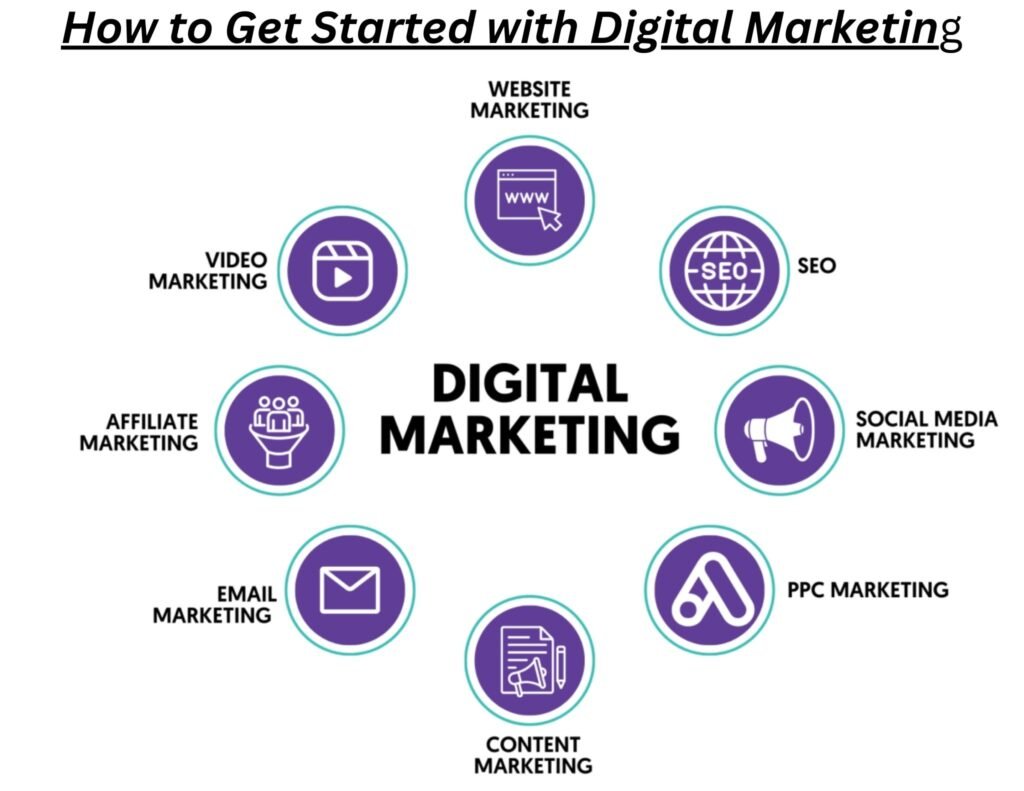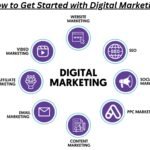Introduction
If you want to really start making a difference in the modern world of today, you need to up your digital marketing game. Regardless if you want to grow your business or build your personal brand, learning how to start digital marketing is an essential and powerful journey. Whether you are a small business owner or an entrepreneur, or have been wanting to jump into the world of online marketing, how to start digital marketing, for the first time, can be daunting. But not to worry, it’s not as hard as you think! In this blog, we will walk you through the steps that will help you embark on your digital marketing journey with confidence and clarity.
Step 1: Familiarization—What is Digital Marketing?
You need to first understand what is digital marketing before you get into strategies, tools, and tactics. Digital marketing includes any form of marketing that uses the internet or electronic devices to reach consumers. Email marketing, social media marketing, SEO, content marketing, and paid online ads are a few examples of digital marketing.
In order to establish ground, it is important to learn the basic concepts and terms for beginners. The deeper you go into the rabbit hole of digital marketing, however, the more you’ll realize that it is also the most rewarding. Knowing the fundamentals, including SEO, PPC (pay-per-click), advertising on social media, and through email campaigns, will quickly give you confidence and keep you ahead of the game in an increasingly crowded digital world.
Step 2: Set Clear Goals
Setting clear and measurable goals is the first and foremost step of learning how to start digital marketing. What do you want to achieve? Your objectives will determine the strategies you put in place, whether you want to increase brand exposure, generate quality leads, or procure more sales.
For instance, keywords and content marketing will be powerful tools, if your goal is to drive more traffic to your website. However, if your goal is to drive engagement or form long-term relationships with your audience, social media marketing and email campaigns are without a doubt your best pals.
Step 3: Identifying Your Target Audience
Your target audience is key in digital marketing. Because how can you write engaging content without knowing who you’re writing for? Knowing your audience intimately is key to your strategies being meaningful and impactful.
Ask yourself these questions:
- Who is my ideal customer?
- What their needs, wants, and pain points are?
- What’s their online presence like?
By answering these questions, it makes it easier for you to reach your digital marketing efforts to the most people to maximize your return on investment. When you know your audience, your messages will be much more relevant, and your marketing will be more off-to-the-side and personalized.
Step 4: Choose the Right Digital Marketing Channels
Now that you know your goals and target audience, it’s time to select the right digital marketing channels for your business. Channels that are popular and impactful include:
- Social Media Marketing: Like we said, sites like Facebook, Instagram, LinkedIn, and Twitter are great ways to connect to your audience on a more personal level.
- SEO and Keywords strategy: With SEO focusing on your website, you can see high impacts on your organic traffic and an increase in the ranking of your website on Google Search.
- Content Marketing: Creating value in the form of blogs, videos, and infographics to earn the trust and credibility of your audience.
- Email marketing is arguably one of the most powerful methods of nurturing relationships and directly reaching your target audience.
- Paid Ads: If you want to gain visibility and attract potential customers, Google Ads or social media ads are great tools.

Step 5: Tools and Techniques — Your Digital Marketing Arsenal
In the realm of digital marketing, strategies only do so much—tools are vital in maximizing improvements as you evolve. These tools may help you better measure your current progress, automate mundane tasks, and then refine your strategies as you go.
Some essential tools include:
- Google Analytics: Monitor your website visitors and learn about user behavior.
- Hootsuite or Buffer: Manage and schedule all your social media posts in one place.
- MailChimp: Send personalized emails and segment your audience to keep them engaged and informed.
You have nothing to lose, but you are a winner once you master these tools.
Step 6: Analyze and Optimize Your Efforts
And that’s the beauty of digital marketing: it is all measurable. Once your campaigns are live, keep an eye on their performance and make adjustments as needed. So get into Google Analytics and social media insights and find out what works and what doesn’t. This feedback loop is pure gold dust and will allow you to optimize your strategy for maximum results.
And, much like everything in life, it is a giant experiment—tweaking and experimenting until you find the formula that works for your brand or personal brand.
Conclusion
The process of learning how to start digital marketing could feel like a really empowering move for your business or career. If you bear in mind the basics, set strong goals, know your target audience, define the appropriate channels, utilize the right tools, you’ll be on the path to success and well ahead of the curve. As a friendly reminder, digital marketing is a never-ending cycle of experimentation, education, and adaptation to the fast-paced world of internet marketing. So be so bold—take a leap and dive into digital marketing now!





Is affiliate marketing legit? Find Out the Truth
17th Mar 2025[…] How to Get Started with Digital Marketing […]